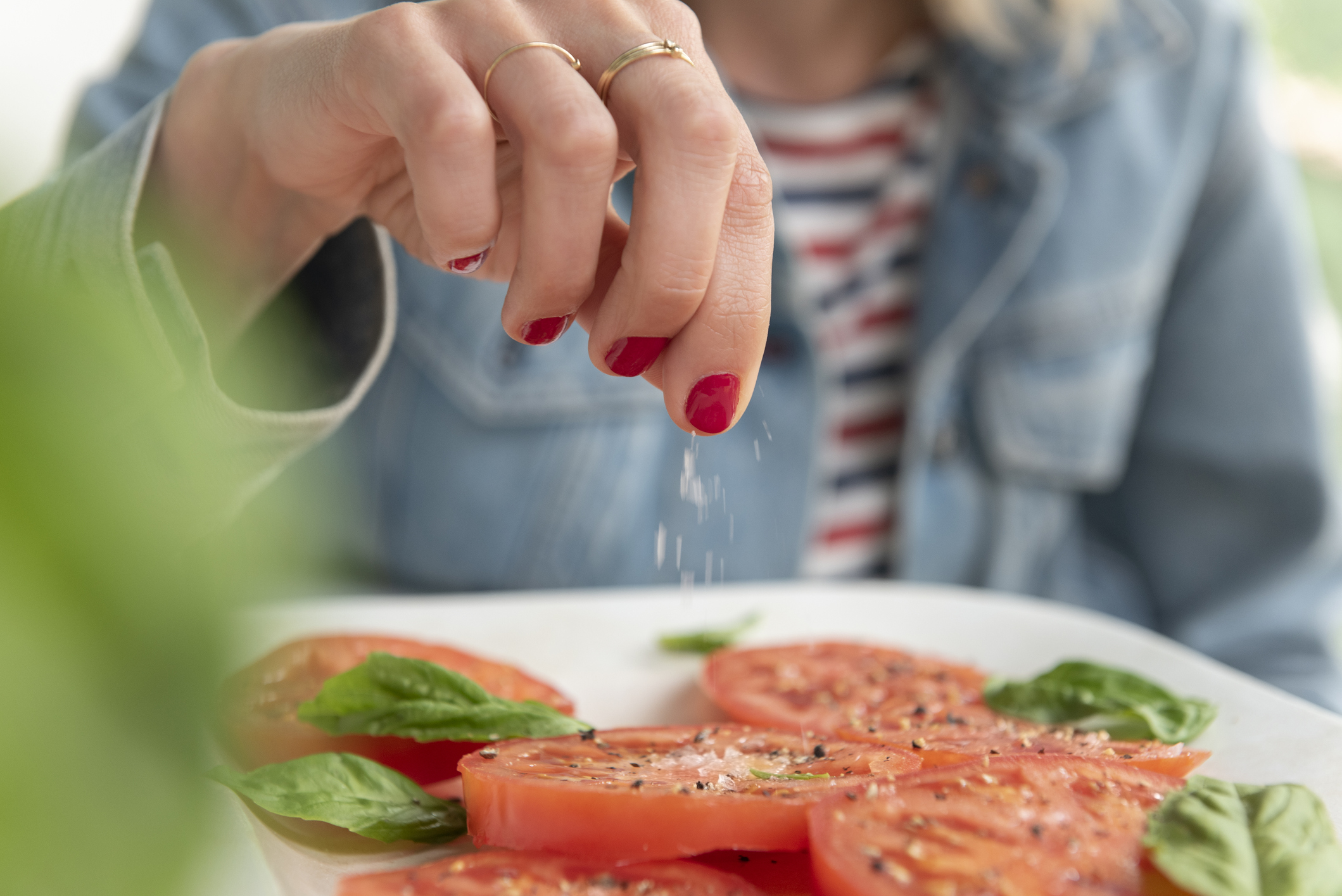Here’s how to shake the salt habit:
- Choose low- or no-sodium options.
- Limit soy sauce, salad dressings, sauces, dips and condiments that contain sodium.
- Use herbs, spices and citrus zest to season meals.
- Use salt-substitutes wisely. You may end up using more than regular table salt and get more sodium than you bargained for. The potassium in salt substitutes can also be harmful if you have kidney problems or take medications for congestive heart failure or high blood pressure.
- Read food labels for hidden sodium.
If you are trying to follow a low-salt diet, you’ll want to cut down or avoid these ingredients, too:
- monosodium glutamate (MSG)
- baking soda (also known as sodium bicarbonate)
- baking powder
- disodium phosphate
- sodium alginate
- sodium citrate
- sodium nitrate
TIP: Try to avoid products with more than 200 mg of sodium per serving. And be sure you know how many servings are in a package. Salt can add up quickly! Cut back on salt slowly and soon you may not miss it at all! In fact, some foods may start to taste too salty.
Aim for less than 1,500 mg of sodium a day in your diet.





